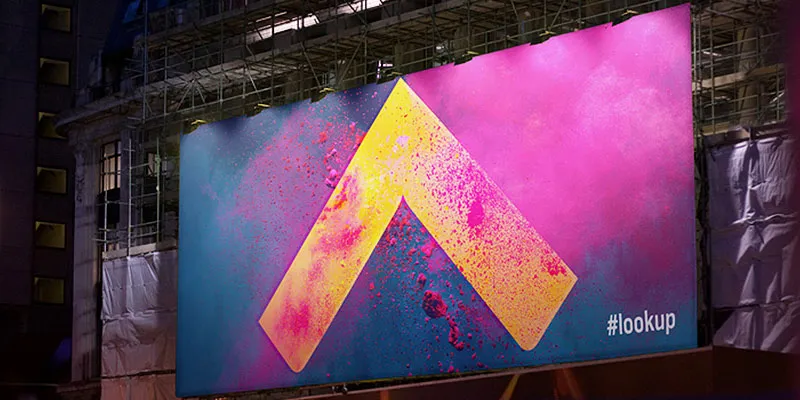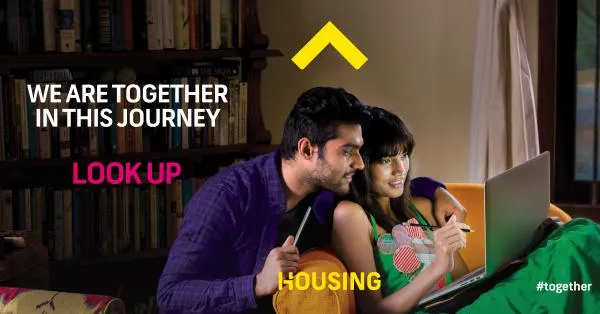Was Housing.com right in spending over Rs 120 crore on the lookup campaign?
Housing.com has been in the news for all the wrong reasons in the past few weeks. First, it was the tersely worded resignation letter by CEO Rahul Yadav that was insulting to the board; this was followed by a quick retraction by him the same day. Then the various tiffs with other startup community members, from Alok Kejriwal to Deepinder Goyal of Zomato and Bhavish Aggarwal of Ola Cabs. This was soon followed by Rahul’s announcement in a company town hall that he would soon be transferring his 4.57% stake in the company to the employees, to the horror of the investors involved. And finally, the Reddit AMA (Ask Me Anything) by Rahul where he spoke candidly about everything from investors (Sequoia in particular), Indian startups and co-founders.
Rahul is either an extremely self-assured, shrewd individual who knows what he is doing in terms of rallying his troops, or he’s just brash and filled with the arrogance that only the naiveté of untested youth can breed. Either way, we, as outsiders have little access to facts in order to make valuable comment.

But one of the things that was widely written about in the media as the root cause for the difference of opinion between the management team and the board was the following: the INR 120 crore (estimated) online and offline #lookup marketing blitzkrieg that the company indulged in. Media reports spoke about how the board thought it was extravagant and how Rahul & team thought of it as necessary.
Keeping aside all of the baggage of the drama that resulted, let us analyze the campaigns rationally and logically.
The campaign utilized the following media:
- Print: National & Regional newspapers (with the lion’s share going to Times of India, until the defamation case by its parent against Rahul Yadav)
- Out of home: Billboards & Hoardings in 7 cities across India
- Digital: Social media such as Facebook, LinkedIn and Twitter
Objective of the campaign:
- Introduce the new brand, including the logo
- An associated keyword #LookUp, which was supposed to imply a positivity, as well as subliminally associate the brand with the phrase that is used interchangeably with ‘search’ in common lingo
As per the Chief Marketing Officer of Housing, Pratik Seal, the campaign was structured as follows:
- Phase 1 of 8 weeks where only the brand, logo and keyword would be launched everywhere. This has since been extended beyond 8 weeks
- Phase 2 where the specific roles that Housing can play in a consumer’s life would be explained. Presumably, this would entail going into specific services offered by the company
- Phase 3 and 4, whose objectives have not yet been made public. These were initially also to include television advertisements as part of the media outlay
To put things into context, the difference of opinion between the board and management team occurred when the first phase was coming to a close. The future of the other phases is now unclear given what has transpired since.

There are many problems with the way the campaign is designed and executed. Here are some of the major ones:
1. Campaigns that have multiple phases over a long period of time, each adding up to and culminating in a goal are very hard to execute successfully. Such plans look amazing on paper and make perfect sense – but in practice, they fail to achieve the intended results. The attention span of the average consumer is highly fragmented, and such long campaigns with a broad message fail to make any lasting impact in terms of ROI. For instance, the average consumer would have seen snippets of phase 1, maybe a tiny portion of phase 2’s services roll out, and so on. The coherent picture that the marketer is intending, is not the same as the disconnected picture that the consumer is forming in his/her mind.
Related read: Young, brash, and confident: YourStory’s interview with Rahul Yadav of Housing
2. Housing.com claims to have a presence across 85 cities in India, with plans to expand further. Arguably, one of the major goals of the campaign would be to expand the brand recall in more and more tier-2 cities where they will have the advantage of being the first to spend resources creating a brand thereby opening them up beyond the crowded tier-1 cities that all companies are targeting. However, they have leveraged billboards only in the top 7 cities in India, and most of the social media users would be present in the tier-1 and only a few tier-2 cities, reflecting the online user base split in India on Facebook, Twitter and LinkedIn currently. Thus, this goal would not have been achieved.
3. Generic re-branding campaigns (where only the logo is unveiled) such as the one run by Housing in phase 1, are usually taken up by brands and companies with a long history. For example, if an IBM would want to reposition themselves in the minds of the consumer, say from being a technology services provider, to a cloud services leader, then it would be a good strategy. The reason is, most people know about IBM; only their service area or customer segment or something else very specific is undergoing a change. But for Housing, a relatively new brand with a history of about 3 years, a generic logo unveiling campaign of 8 weeks was an unnecessary expense.
4. The complete phase 1 never mentioned even one of its core service offerings. The campaign used generic sounding platitudes (“We are together in this journey”) that would have been as at home on an insurance company billboard as they are on Housing’s billboard. Given the number of distractions and the time elapsed between seeing an advertisement and acting on it, online businesses’ marketing budgets are best utilized online, where ads are seen very close to the purchasing decision (action).
5. The founders have taken pains to explain in every interview that the search related business is only a small part of their overall revenue potential. They plan to enable transactions of new properties by partnering with developers, they plan to ease rental process by helping in agreement creation, and so forth. Given this stated game plan, why spend on getting associated with a keyword that only refers to searching? (#LookUp) This is a primary disconnect.
Our View
It is easy to create a huge splash that everyone will talk about and remember for a few months. It is very hard to create a business that lasts many decades, leaving a legacy. The Housing marketing team has claimed that traffic has increased 500% since the launch of the campaign and that on some key campaign days there is a traffic jump of 15-20 times. So what? You spend X money, you get Y traffic. The ability to move from vanity metrics to true business fundamentals (repeat users, # of transactions, revenue) is what is going to be the game changer.
Thousands of entrepreneurs before Rahul & team, and thousands after them will continue to make one fundamental mistake – thinking that building a good product is equivalent to building a great business. The truth couldn't be further from it. If the rumored figure of INR 120 crore is right, it would mean that they have spent $20 million of the last funding round of $90 million on a single marketing campaign, while they are not making large revenues. Let this fact sink in. This decision would only have been made by a team who is more sure of their next round of funding as opposed to knowing when they would achieve large revenue growth targets.
So what would be the right marketing plan for a company like Housing?
- No one cares about a well-stitched together campaign lasting 8-9 months. Convey the message on just 2-3 key service offerings. Say it regularly, and say it often. It takes over 10 touch points with the same consumer to really become associated with a particular service offering, so taking more than 2-3 service offerings does not make any sense.
- You can’t be everything to everyone. Pick a primary stakeholder – is it the end consumer? Or is it the builders / developers? Or is it the brokers? Until you pick one stakeholder to truly impact, the needle will not move anywhere.
- Having the vision for multi-country and multi-offering company is great. But sequence is everything. There is a ton of room to grow and perfect the offerings just in India across the complete renting value chain (search, see, decide, create agreement, rent) and house purchase value chain (search, see, decide, home loan, purchase agreement, buy).
What are your thoughts on the campaign? Let us know in the comments section below.







